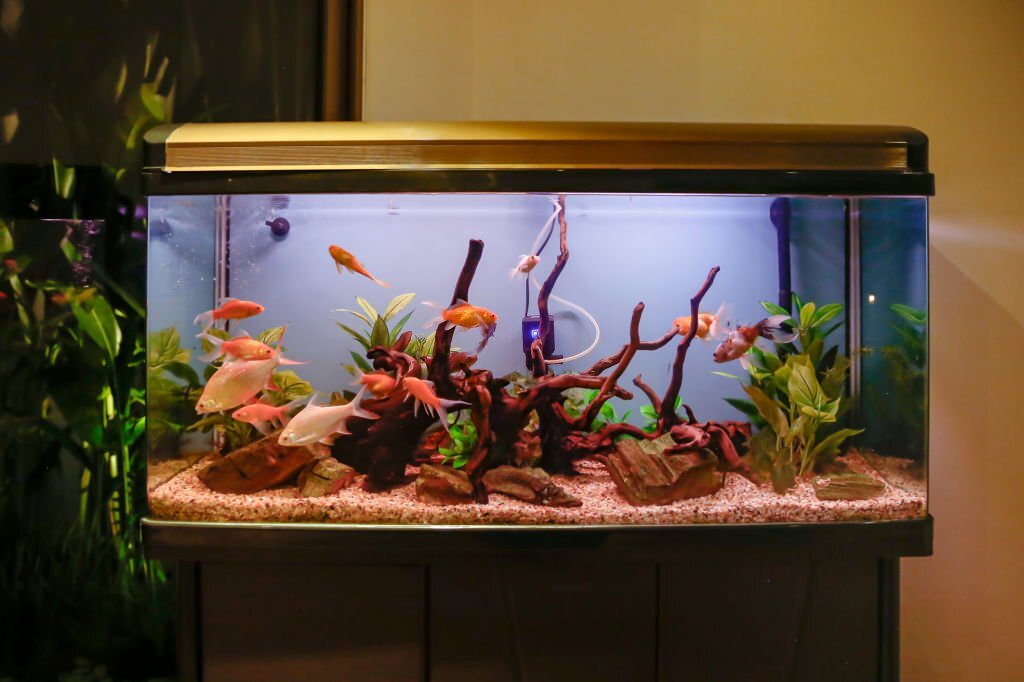Introduction
Algae growth is a common problem in fish tanks that can be frustrating for fish owners. Not only does it make the tank look unsightly, but it can also harm the fish and other aquatic life in the tank. Controlling and preventing algae growth is crucial for maintaining a healthy and thriving fish tank.

Understanding the Causes of Algae Growth in Fish Tanks
There are several factors that contribute to algae growth in fish tanks. Excess nutrients, such as phosphates and nitrates, can fuel algae growth. Light is also a major factor, as algae require light to photosynthesize and grow. Poor water quality, including high levels of ammonia and nitrate, can also contribute to algae growth.
To prevent algae growth, it is important to address these factors. This can be done by reducing excess nutrients through proper feeding and regular water changes, controlling the amount and duration of light in the tank, and maintaining proper water parameters.
Choosing the Right Lighting for Your Fish Tank
There are several types of lighting available for fish tanks, including fluorescent, LED, and metal halide. When choosing lighting for your fish tank, it is important to consider the specific needs of your fish and plants. Some fish and plants require more or less light than others, and different types of lighting can affect the growth and health of aquatic life in the tank.
To prevent algae growth, it is important to control the amount and duration of light in the tank. This can be done by using a timer to regulate the amount of light the tank receives each day, and by choosing the right type of lighting for your specific setup.
Maintaining Proper Water Parameters to Prevent Algae Growth
Maintaining proper water parameters is crucial for preventing algae growth in fish tanks. This includes testing and adjusting pH, ammonia, and nitrate levels, as well as performing regular water changes to remove excess nutrients and maintain water quality.
Testing kits are available to help fish owners monitor water parameters and make adjustments as needed. Regular water changes, typically once a week, can also help maintain proper water parameters and prevent algae growth.
Controlling Algae with Chemical Treatments
Chemical treatments are available for controlling algae in fish tanks, but they should be used with caution. Some chemical treatments can harm fish and other aquatic life in the tank, and they can also disrupt the natural balance of the tank.
If using chemical treatments, it is important to follow instructions carefully and monitor the tank closely for any adverse effects. It is also important to address the underlying causes of algae growth, such as excess nutrients and poor water quality, to prevent future outbreaks.
Natural Methods for Algae Control in Fish Tanks
Natural methods are a safer and more sustainable option for controlling algae in fish tanks. Live plants can help absorb excess nutrients and compete with algae for resources. Algae-eating fish, such as plecos and Siamese algae eaters, can also help control algae growth.
Other natural methods include reducing the amount of light the tank receives, using algae scrubbers to remove excess nutrients, and manually removing algae from the tank.
The Importance of Regular Water Changes in Algae Prevention
Regular water changes are crucial for maintaining proper water parameters and preventing algae growth in fish tanks. They help remove excess nutrients and maintain water quality, which can help prevent outbreaks of algae.
To perform a proper water change, fish owners should remove a portion of the tank water and replace it with fresh, dechlorinated water. This should be done once a week, or more frequently if necessary.
Choosing the Right Fish and Plants to Help Control Algae Growth
Choosing the right fish and plants can also help control algae growth in fish tanks. Algae-eating fish, such as plecos and Siamese algae eaters, can help keep algae under control. Live plants can also help absorb excess nutrients and compete with algae for resources.
When choosing fish and plants for your tank, it is important to consider their specific needs and compatibility with other aquatic life in the tank.
Tips for Maintaining a Clean and Algae-Free Fish Tank
To maintain a clean and algae-free fish tank, it is important to perform regular maintenance tasks such as cleaning the tank and filter, removing excess debris, and monitoring water parameters. Fish owners should also avoid overfeeding their fish, as excess food can contribute to algae growth.
Other tips for preventing algae growth include reducing the amount of light the tank receives, using natural methods such as live plants and algae-eating fish, and addressing underlying causes such as poor water quality.
Conclusion
Controlling and preventing algae growth is crucial for maintaining a healthy and thriving fish tank. By understanding the causes of algae growth and implementing strategies such as controlling lighting, maintaining proper water parameters, and using natural methods, fish owners can keep their tanks clean and algae-free. Regular maintenance tasks and careful attention to the needs of aquatic life in the tank can also help prevent future outbreaks of algae.